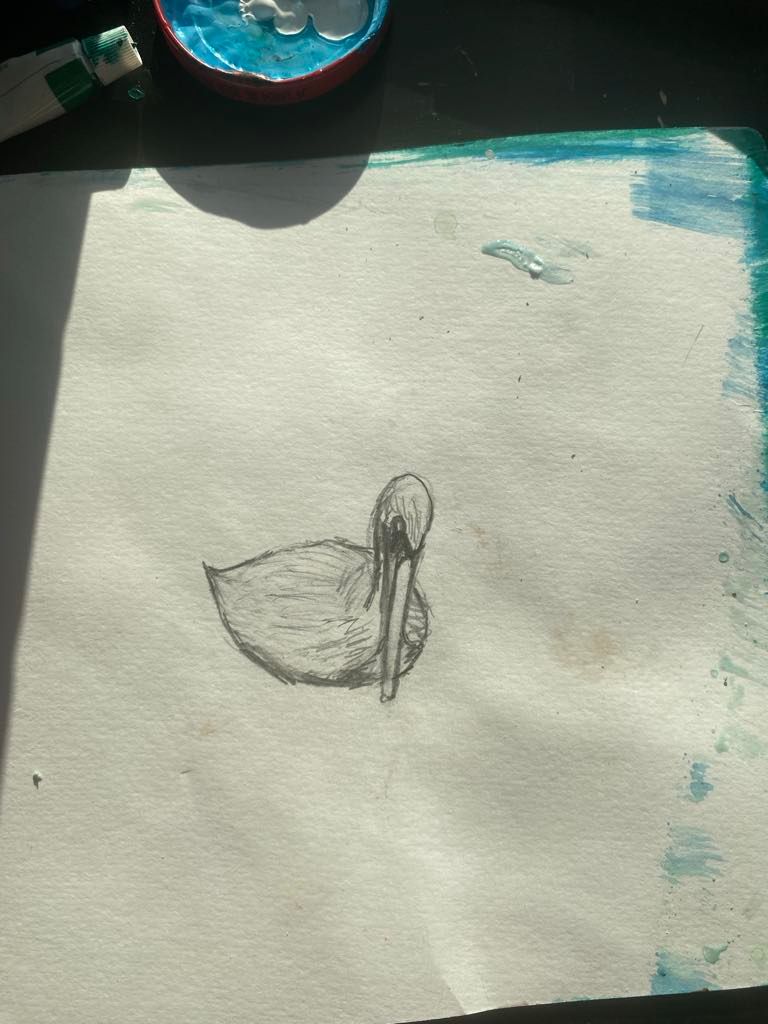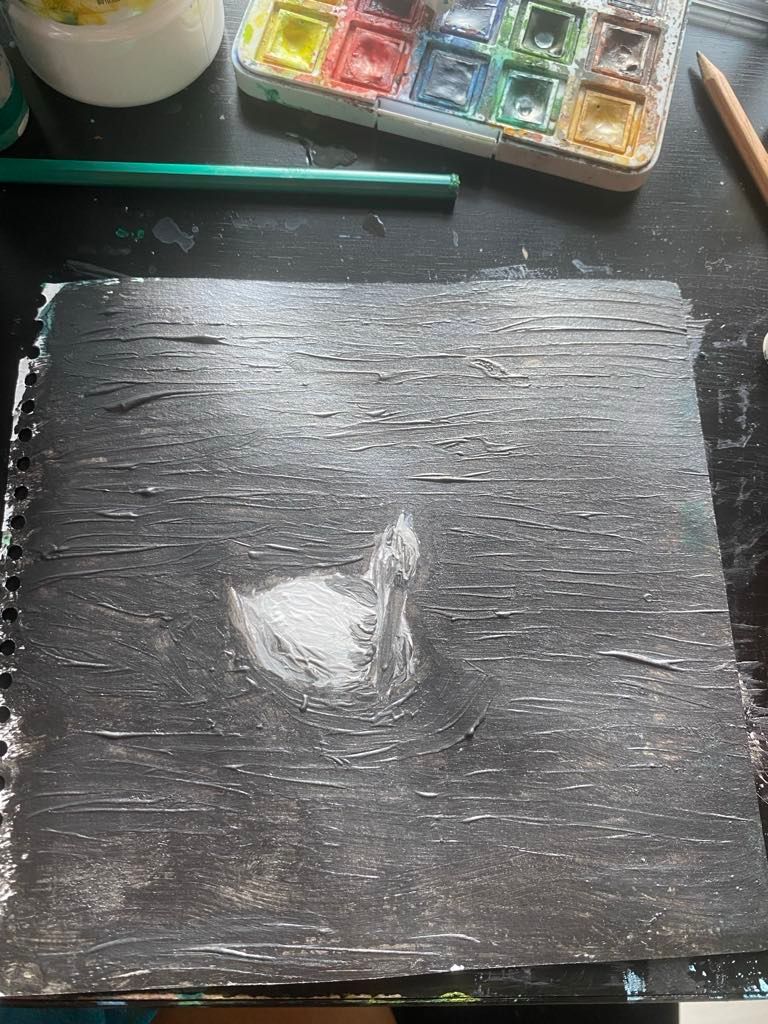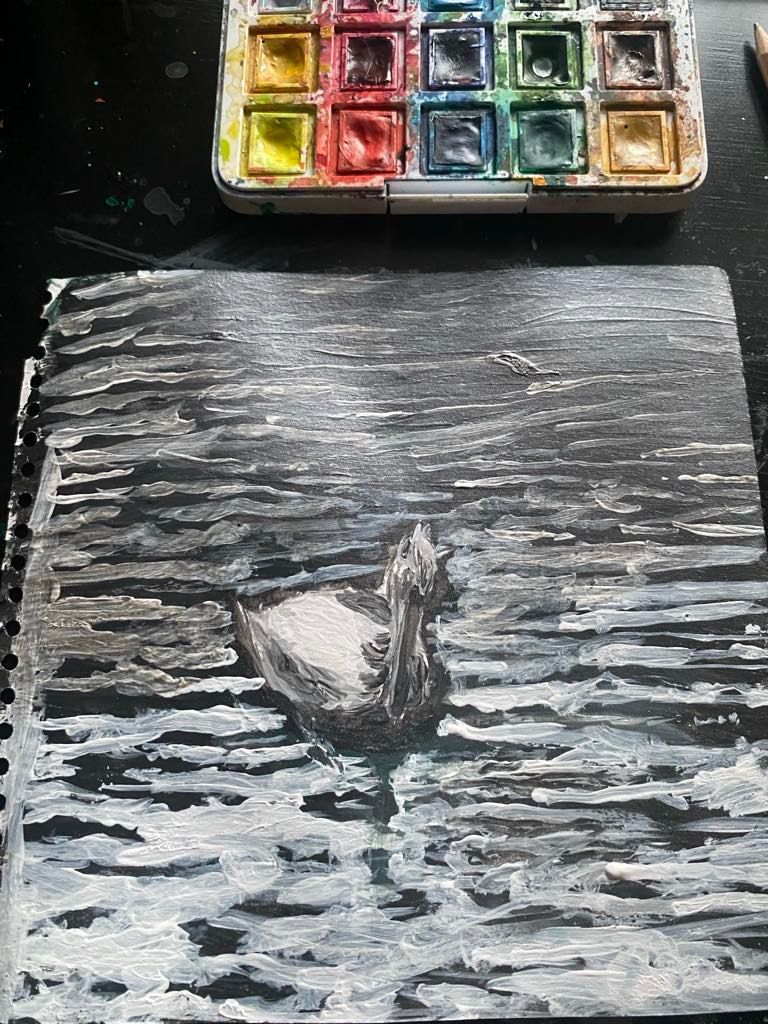Mastering Water Reflections in Acrylic: A Step-by-Step Artistic Guide
Mastering Water Reflections in Acrylic: A Step-by-Step Artistic Guide
Creating a sense of reflection in water is more than a technical detail, it’s what transforms a painting from a flat composition into an immersive, emotive experience.
In this tutorial, we explore how to build a convincing water reflection using acrylics, drawing from the subtle transitions and textured layering techniques that give depth and atmosphere to your scene.
A Dialogue Between Subject and Surface
In any water-based painting, the subject’s reflection is a visual echo. It is never identical, often distorted. The goal isn’t to mirror perfectly, but to capture how light, movement, and surface texture interact to suggest presence and illusion.
Using a simple swan or water bird as the central figure, this process demonstrates how to gradually build a realistic reflection within a textured, monochromatic setting.
Materials Required
-Acrylic paints (Black, White, Grey mix)
-Heavyweight paper or canvas
-Flat brushes (medium and small)
-Palette knife or stiff bristle brush (optional)
-Graphite pencil for sketching
-Water, palette, cloth
Step-by-Step Process
Step 1 – Prepare the Sketch
Begin with a light graphite outline of the bird in the center of your page. Focus on a clean silhouette: curved body, lifted wings, an elongated neck. Keep it simple and centered, allowing space beneath for the reflection to unfold.

Tip: Keep the lines minimal. This is the foundation, not the focal point.
Step 2 – Establish the Base with a Black Background
Apply a generous layer of black acrylic paint to the entire surface, carefully painting around your sketched bird. Use horizontal brushstrokes for texture and motion.

This dark base sets the stage: both water and sky merge into a deep, contemplative environment.
Step 3 – Define Water Texture with Horizontal Highlights
Using diluted white or light grey paint, sketch the shape of the bird’s reflection directly below it. This is not a perfect mirror, make it softer, slightly distorted, and tapering downward.

Work with vertical strokes, pulling the light tones downward.
Smudge lightly at the base to blur the edges.
The reflection should feel like a memory of the bird, not a photocopy.
Once the reflection is in place, begin layering horizontal white or grey lines across the canvas to emulate ripples and light refraction.
Use a flat brush or palette knife.
Focus on irregular spacing: cluster strokes near the bird and scatter them further out.
Overlay with thin grey tones to create shadow depth between the white streaks.
This interplay between dark and light mimics the way water reflects and breaks apart visual information.
Build further contrast by adding more white around the bird’s base, as if light is bouncing off its body and radiating outward. Introduce a few vertical strokes below the reflection to represent the bird’s movement through water.
Blend slightly with a damp brush for a soft fade.
You can enhance with touches of deep grey or black to break up uniformity.
The result is not static—it breathes, suggesting ripples in motion.
Step 4 – Refine and Layer for Depth
In the final pass, enhance the realism by:
Adding smaller, irregular horizontal marks in the far background.
Using a dry brush technique to lightly blur portions of the reflection.
Reinforcing highlights where the light would naturally catch on the bird and ripple lines.
At this stage, restraint is key. A well-placed brushstroke speaks louder than overworked details.

More Than Technique: Creating Atmosphere
Beyond technical application, painting water reflections is about mood. The bird becomes a symbol of solitude or stillness; the reflection a metaphor for transience. The monochrome palette, the visible brush textures, and the intentional distortions all invite the viewer to linger.
Closing Thoughts
Reflections are not about symmetry. They’re about interpretation. Just like in art collecting, what matters is not the exact replication of reality, but how you frame perception. Through this methodical yet expressive approach, you create a visual language that’s both emotionally resonant and technically grounded.
Whether you're painting swans at dusk or lone figures in still water, the art of reflection lies in subtlety, patience, and deliberate imperfection.